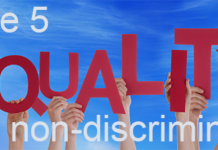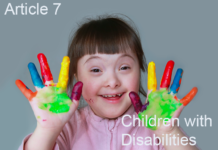It is difficult to assess the compliance of the UK with article 30. The problem with assessing the fulfilment of the rights of disabled people to equal opportunities to participate in culture, recreation, leisure and sport is that this right is not monitored at a national level. It could be done through meaningful proxy indicators, such as the increase in the number of cinemas with wheelchair access, or fitted with hearing loops etc. Therefore this assessment can only be made through the disabled people’s level of participation indicator which is too rough an instrument to identify factors leading to increased or reduced participation or through qualitative data, by asking disabled people about perceived barriers to participation.
Since 2005 the UK government, through the Ministry for Culture, has been undertaking a survey ‘Taking Part’ which does not focus specifically on disabled people, but which nevertheless highlights the lack of participation and access of disabled people to equal opportunities to participate in culture, recreation, leisure and sport, compared with their able-bodied counterparts.[1]
Research has found that around a third of disabled people have experienced difficulties in accessing public, commercial and leisure goods and services. [2] Of those surveyed, 57% highlighted transport as a major issue and didn’t feel confident using public transport.
In Greater London there are 265 cinemas, of which only 63 are described as having disabled facilities. But these facilities are spread very unevenly across them, some of them having only 3 facilities, one of these being providing seats. Hearing loops are provided by only 44 cinemas, and none of them mentions captioned performances. The same trend is found for performing arts. Of 214 theatres in Greater London, only 140 have disabled facilities, but only 8 theatres provide sign language, 5 Braille, etc. Greater London has 173 museums of which 94 have disabled facilities, 10 offer Braille, 36 offer large print documentation. None of the facilities in cinemas, theatres, museums include Easy Read documentation for people with learning disabilities. Sign language interpretation for performances and subtitles for films remain key means of ensuring the participation of Deaf people which are not used.
Blind and partially sighted people still face a “Book famine”, in which most published books are never made available in accessible formats such as large print, audio or braille. In 2011 only 7% of all published titles were available in accessible formats in the UK.[3] The UK government should now ratify the “Marrakech Treaty to Facilitate Access to Published Works for Persons Who Are Blind, Visually Impaired or Otherwise Print Disabled”[4], which would at least partly address the “book famine” shortfall by allowing the import of accessible books to the UK from other countries without falling foul of copyright law.
Sporting activities are currently largely inaccessible to Deaf people for both leisure and elite training due to a lack of Deaf coaches and of BSL-English interpreters for coaching and training sessions. Interpreters were also not broadcast for national sporting events such as the Paralympics and Commonwealth games.
[1] https://www.gov.uk/government/uploads/system/uploads/attachment_data/file/77920/Taking_Part_2011_12_Annual_Report.pdf
[2] http://www.shapearts.org.uk/media/1228613/shape_understanding_disabled_people_as_audiences_2012-13.pdf
[3] RNIB, “Availability of accessible publications”, (2011). Available at: http://www.rnib.org.uk/knowledge-and-research-hub-research-reports/reading-and-braille-research



